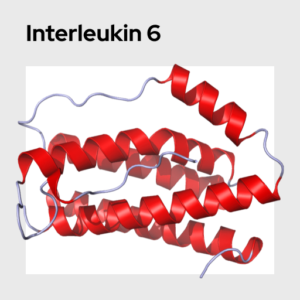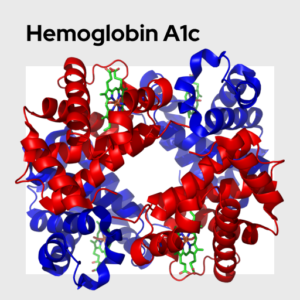Ultra-sensitive IL-13
Interleukin 13 (IL-13) is a pleiotropic protein that exerts effects similar to that of the cytokine IL-4. IL-13 is released by Th2 cells, T cells, NK cells, basophils and eosinophils. While IL-13 has anti-inflammatory properties, it is also a central mediator of allergic inflammation and regulates the production of IgE (an antibody type involved in allergy). Levels of IL-13 are typically low in the blood of healthy people, so measuring this cytokine in serum or plasma may require an ultra-sensitive assay. Ultra-sensitive versions of assays CANNOT be multiplexed.
Name: Ultra-sensitive Interleukin 13 (IL-13)
Category: Health & Inflammation
Type of test: Blood
Interleukin-13 (IL-13) is a pleiotropic protein that exerts effects similar to that of the cytokine IL-4. IL-13 is very in structure to IL-4, so much so that the type 2 IL-4 receptor does not distinguish between these two proteins. Nonetheless, IL-13 does exert effects independent of IL-4. IL-13 is released by T helper 2 (Th2) cells, NK cells, basophils, and eosinophils, among other cells. Most of the biological action of IL-13 is mediated through the transcription factor STAT6 which regulates gene expression in cells that balance host immunity and facilitate the development of Th2-type responses.
Despite having anti-inflammatory properties, IL-13 is perhaps best known for its role in mediating allergic inflammation and contributing to the pathology of asthma. IL-13 is a key regulator of IgE synthesis and release from B cells, the primary antibody involved in allergic diseases and the immune response to large, extracellular parasites like helminths. Given its role in promoting inflammation in airways, anti-IL-13 treatment has been explored as a potential treatment for asthma. For example, drugs targeting the shared receptor of IL-4 and IL-13 (i.e., IL4Ra) hold promise for reducing asthmatic symptoms.
In healthy individuals without allergic diseases or asthma, levels of IL-13 are typically quite low in serum / plasma. Nonetheless, this cytokine can be measured in both saliva and serum / plasma samples. The extent to which serum / plasma and salivary IL-13 levels correlate is yet to be confirmed.
McKenzie, G. J., Bancroft, A., Grencis, R. K., & McKenzie, A. N. (1998). A distinct role for interleukin-13 in Th2-cell-mediated immune responses. Current Biology, 8, 339-342. https://pubmed.ncbi.nlm.nih.gov/9512421/
Wills-Karp, M., Luyimbazi, J., Xu, X., Schofield, B., Neben, T. Y., Karp, C. L., & Donaldson, D. D. (1998). Interleukin-13: central mediator of allergic asthma. Science, 282, 2258-226. https://pubmed.ncbi.nlm.nih.gov/9856949/
Zurawski, G., & de Vries, J. E. (1994). Interleukin 13, an interleukin 4-like cytokine that acts on monocytes and B cells, but not on T cells. Immunology Today, 15, 19-26. https://pubmed.ncbi.nlm.nih.gov/7907877/






